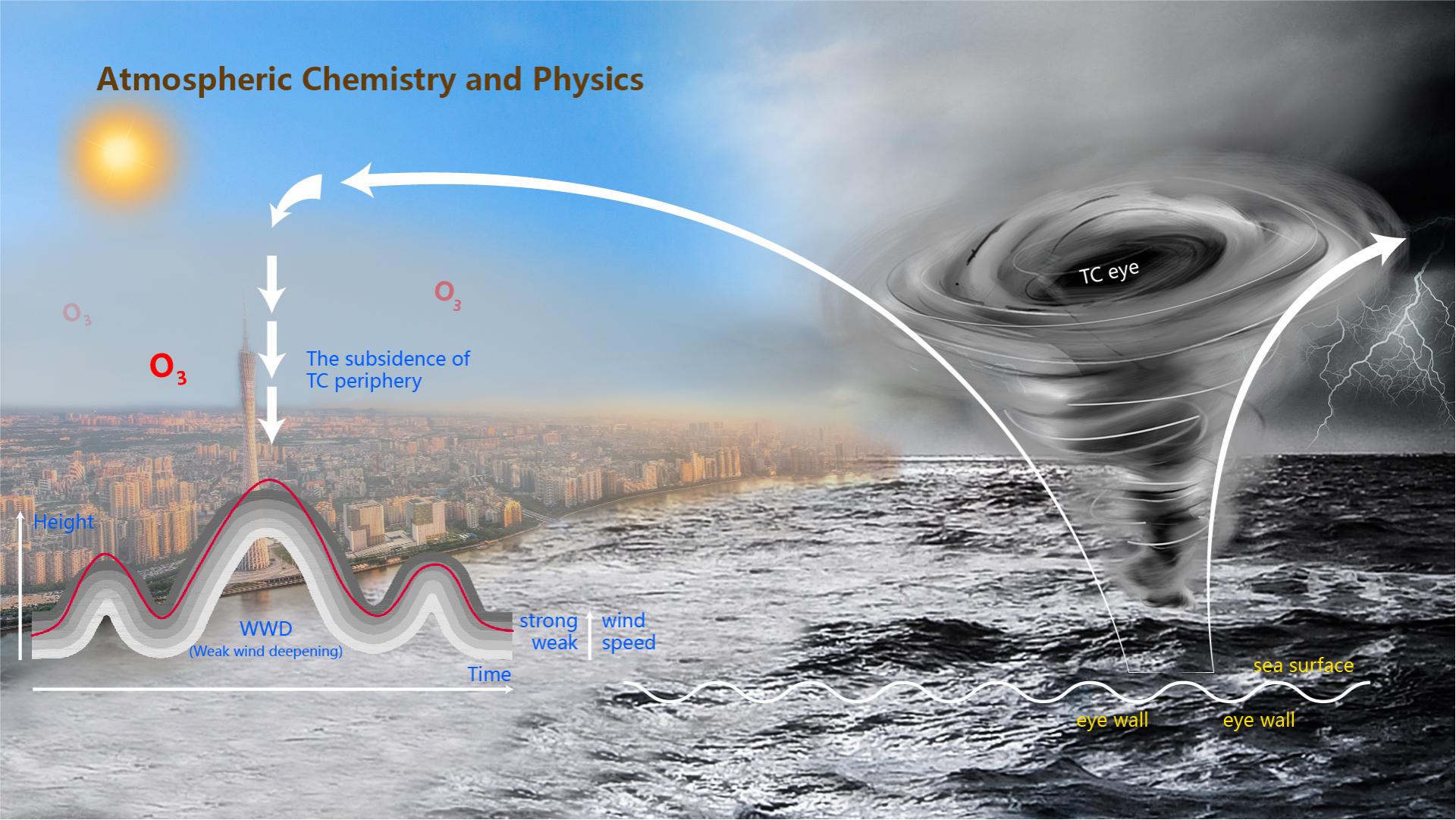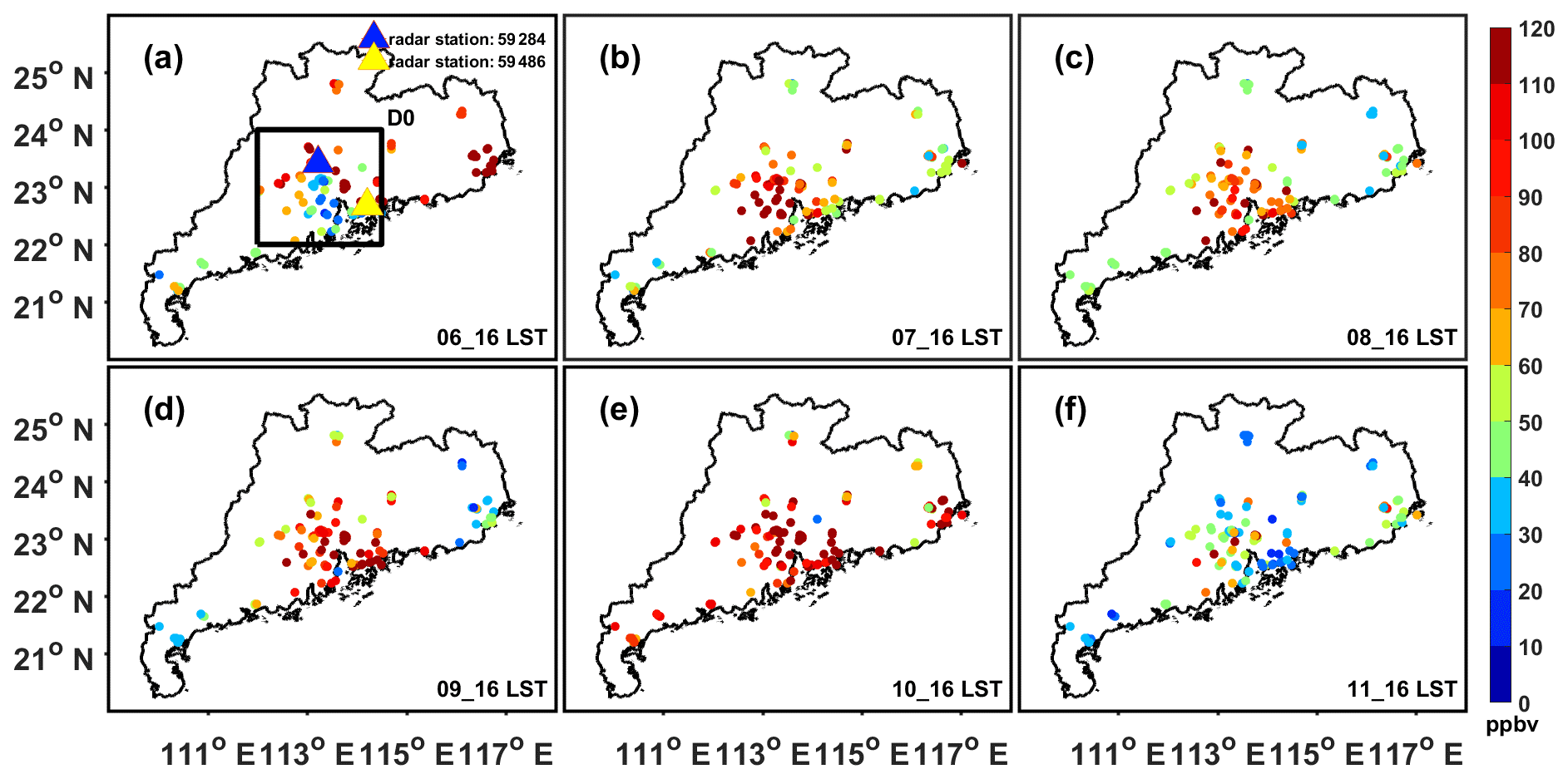Ozone in the stratosphere can shield ultraviolet rays and protect the Earth’s organisms. However, within the planetary boundary layer (PBL) from the Earth’s surface to about 1km, the increase of ozone concentration will increase air oxidation, harming human health, plants, and crops.
Ozone is a typical secondary air pollutant and can be generated by the photochemical reaction of nitrogen oxides and volatile organic compounds, or transported from other regions or high-altitude by atmospheric transport processes. The ground observation data show that the frequent typhoon peripheral circulation in the Guangdong-Hong Kong-Macao Greater Bay Area (GBA) in summer and autumn can cause high ozone pollution events. Still, the mechanism of how typhoons affect high ozone pollution in the boundary layer is not clear, which is crucial for better prediction of the daily ozone variation.

Assistant Professor Ying Li’s group from the Department of Ocean Sciences and Engineering at the Southern University of Science and Technology (SUSTech), along with collaborators from the School of Mathematics and Finance at Chuzhou University (CZU) and the School of Atmospheric Sciences at the Chengdu University of Information Technology (CUIT), have recently analyzed ground observation, wind profile data, and model simulation to observe the impacts of typhoons on the ozone pollution over the Pearl River Delta region.
Their paper, entitled “The impact of peripheral circulation characteristics of typhoon on sustained ozone episodes over the Pearl River Delta region, China,” was published in Atmospheric Chemistry and Physics (ACP), a journal dedicated to investigating the Earth’s atmosphere and the underlying chemical and physical processes.
The objective of this study is to understand the impact processes of typhoon circulation characteristics on the day-to-day variation of daytime ozone concentration in TC-ozone episodes. The analysis of ground observation, wind profile data, and Weather Research and Forecasting model coupled with Chemistry (WRF-Chem) simulation with process analysis is integrated.

Figure 1. The horizontal distribution of surface ozone concentration over PRD at 16:00 from (a) 6 July 2016 to (f) 11 July 2016. The yellow and blue triangles in (a) denote the positions of wind profiler stations 59 486 and 59 284. The black box denoted D0 indicates the area where the severe ozone pollution event occurred.
Prof. Li’s team first analyzed the peripheral circulation characteristics of 38 typhoons that occurred in the Northwest Pacific from 2014 to 2018. The results showed that during the generation and development of typhoons, not only did the surface weak wind appear in the periphery, but the weak wind also appeared from the surface up to 3-5km away, that is, the obvious weak wind deepening (WWD) phenomenon. When WWD occurs, the proportion of ozone pollution events is as high as 94%. It is found that WWD can better indicate the change of surface ozone depth than surface wind.
The study reveals the mechanism of ozone pollution caused by typhoon peripheral circulation and the important influence of the change of WWD and related advection-diffusion on the daily change of pollution concentration in ozone pollution events. It also explains why the daily peak value of ozone pollution continues to rise in the late stage of the persistent ozone pollution event caused by the typhoon peripheral circulation, when the photochemical contribution is weakened.
This research helps to better predict the daily change of ozone pollution that lasts for many days caused by the typhoon peripheral circulation. It provides an important scientific basis for the formulation and implementation of emission reduction measures for pollution precursors in the air pollution emergency consultation.
Ying Li, Assistant Professor at SUSTech, is the first author of this paper. Dr. Xiangjun Zhao and Dr. Xiangjun Zhao are the corresponding authors. Other contributing members of the team included Jinhui Gao.
This research has been supported by the National Natural Science Foundation of China (NSFC), the Shenzhen Science and Technology Program, the Key Area Research and Development Program of Guangdong Province, the Guangdong Basic and Applied Basic Research Fund Committee, the Key Special Project for Introduced Talents Team of Southern Marine Science and Engineering Guangdong Laboratory (Guangzhou), the Guangdong Province Science and Technology Planning Project of China, and the Shenzhen Key Laboratory Foundation.
Paper link: https://acp.copernicus.org/articles/22/3861/2022/
To read all stories about SUSTech science, subscribe to the monthly SUSTech Newsletter.
Proofread ByAdrian Cremin, Yingying XIA
Photo By